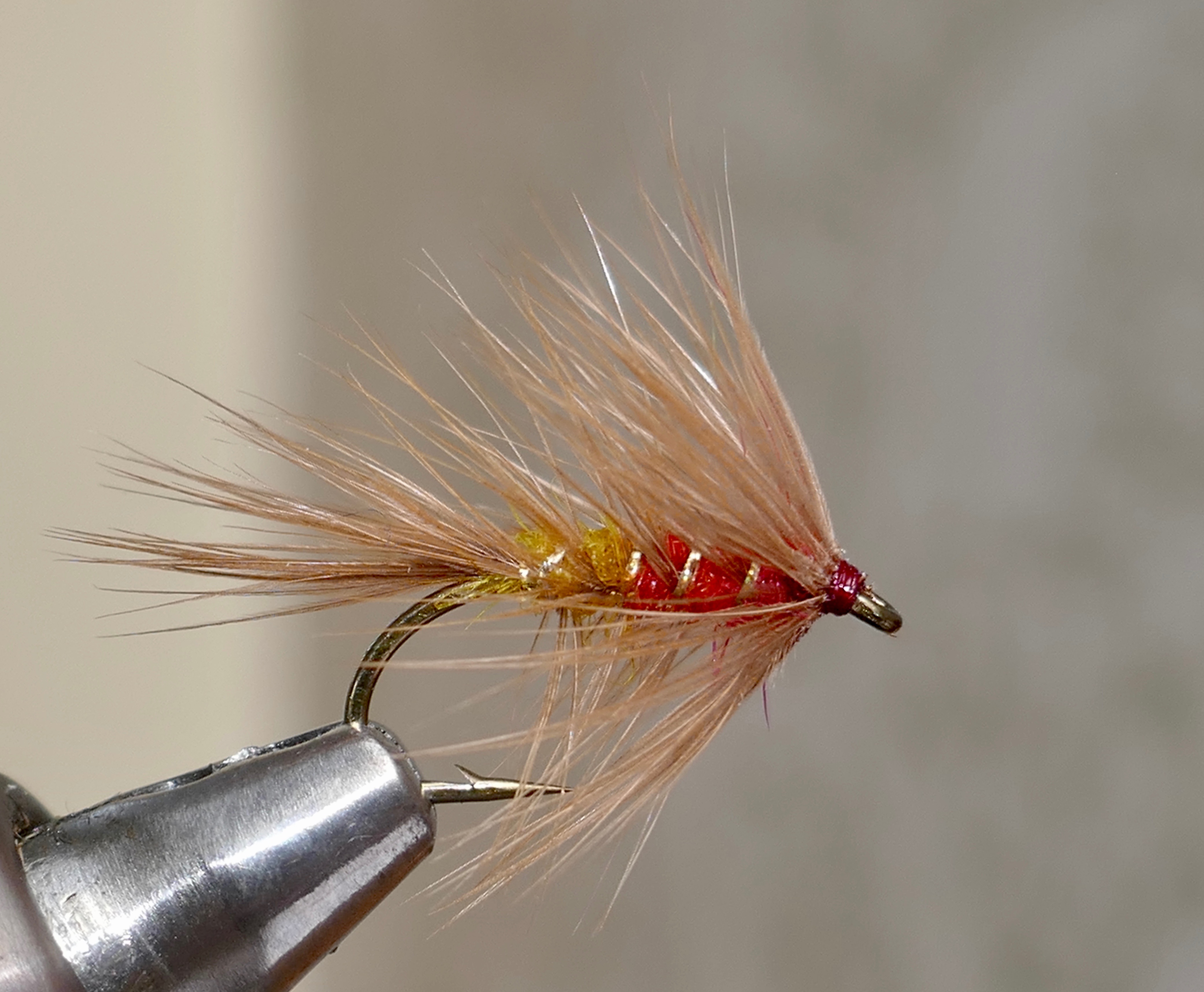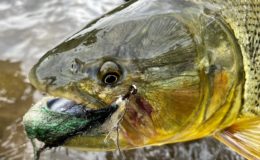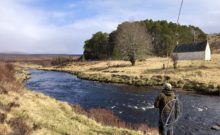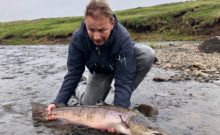Tying the Aberdeen Angus was a stroke of luck. I am no great fly tyer, and nowadays tie only sporadically which compounds my lack of technique. Fly tying is all about practice and momentum, but there was a time when I loved to tie flies, but was never very accomplished. Not for me the mastery of the whipped finish and the perfectly palmered hackle, many of my flies looked ok, caught fish, but were never as good as I knew they could be. I know my limits, and now I can ask really good professional fly tyers to tie patterns and batches of different flies up for me, and the result is I get what I want and they look fantastic. This is particularly true when you want expertly tied salmon flies or competition standard deep water river nymphs. Why didn’t I do this earlier?
I still have boxes of fur and feather, a hideous museum of victorian yesteryear, hares masks, squirrels tails, moleskin, seals fur and enough fluorescence to pack a Christmas tree. I loved to invent fly patterns, and see if I could blend the very best of already proven wet fly patterns with a twist or two. The Aberdeen Angus was exactly that fly. Bored of a numbing discipline of tying bumbles and bibios in various sizes, [I was fishing in Orkney after all], I branched out and blended the best attributes off the Solider Palmer with features of the Solwick. A simple idea and a very simple fly. I mention it in the blog, because well it works and has worked for me on English reservoirs, Welsh lakes, Irish Loughs, and Scottish lochs from Rutland to the very special Orcadian waters.
I suspect that the pattern is now lost to a time when these types of palmered flies represented winged insects, especially sedges. The continuing decline of upwind insects has had a significant impact on the trouts diets, and now chironomid patterns and daphnia have become the staple food source for many of the brown and rainbow trout. The impact on patterns like the Aberdeen Angus is that modern day tying may well be more ‘Snatcher’ than traditional wet, i.e., the same pattern but tied on chironomid or midge hooks, with the tying taken round the bend of the hook so as to imitate the hatching midge. You might also want to consider adding jungle cock or biots as a imitation of cheeks of the hatching insect. Either way, the pattern will work fished as a top dropper across the wave, lifted and held twitching but virtually still, and wait. Just wait. The takes when they come can be spectacular ranging from the headlong dive into the fly to a heart stopping moment on Grafham water during the Benson and Hedges fly fishing final, when drifting towards the tower, a huge, really, huge, 8lb plus wild brown just rolled the fly. I never saw it break the surface of the water, it was just there. I watched as the head, then the body and finally, a long languid tail broke surface, but only for him to turn and miss the fly. I cast again to the same point, and again slightly to the right, but he had seen enough and was gone. That missed fish is still the largest fish I have ever seen on a reservoir and I can still feel the tremble and shake of hope when he missed the fly.
The tying has been written up in Trout Fisherman magazine as well as Stan Headley’s ‘Flies of Scotland’ and the ‘Illustrated Dictionary of Trout Flies’ by John Roberts. The pattern is straightforward and reproduced for you below;
Hook: 10-12 [strong wet fly hook, Tiemco, Drennan or Partridge]
Thread: Brown
Tail: Bunch of ginger cock fibres
Body: Rear half, Invicta below seals fur, front half, red seals fur]
Rib: Narrow flat gold
Body hackle: Ginger hen [A softer profile in the water]
Head hackle: One turn of Ginger hen.
For those of us who love to fish for wild fish, river or lakes, try the Aberdeen Angus and if like me, your days of fly tying are for the moment behind you, then contact Chris Reeves at chris.reeves@fishingclass.co.uk, who tied the excellent Aberdeen Angus in the photograph.
Check out the echoesfromariver instagram account for latest photos and content.



